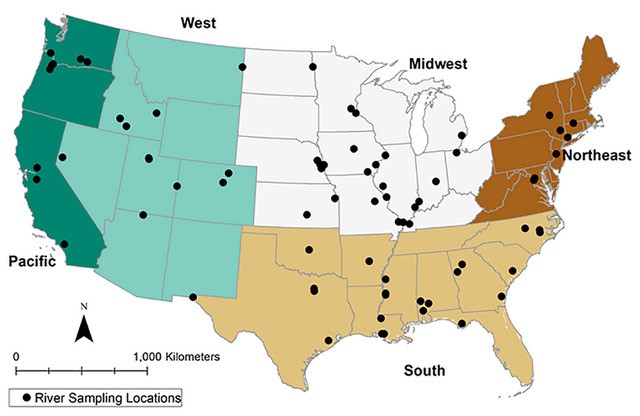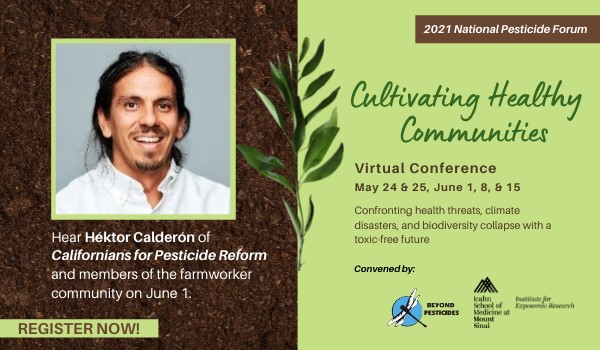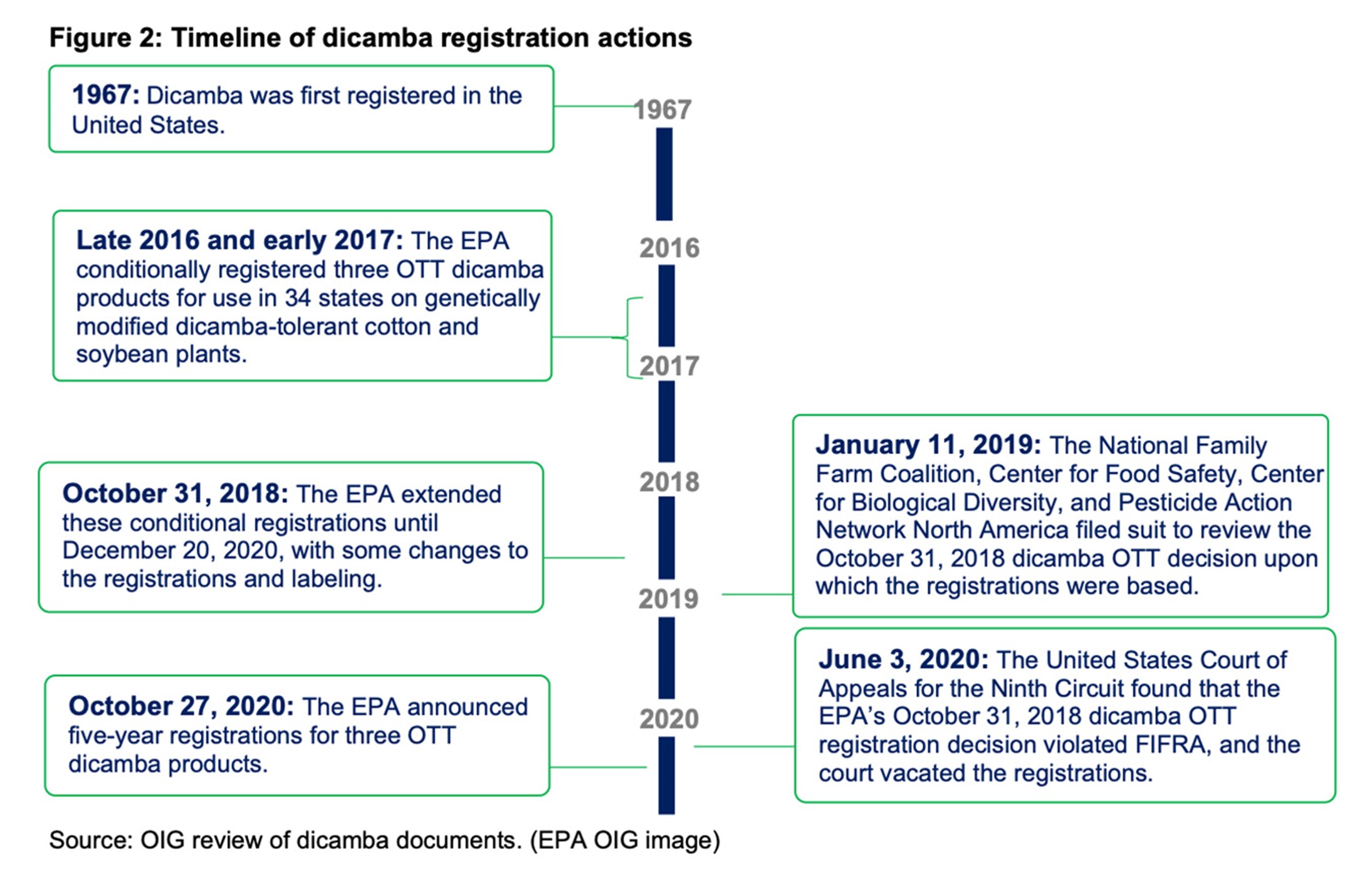(Beyond Pesticides, June 18, 2021)¬†As the U.S. Environmental Protection Agency (EPA) continues to drag its feet on protective regulation of neonicotinoid pesticides, states continue to step up to restrict their use. In April, the Maine legislature passed, and Governor Janet Mills has now signed, a new law that will prohibit use of neonicotinoid pesticides with the ‚Äúactive ingredient[s] dinotefuran, clothianidin, imidacloprid or thiamethoxam used for application in outdoor residential landscapes such as on lawn, turf or ornamental vegetation‚ÄĚ [links by Beyond Pesticides]. Though short of an outright ban, this law is a solid step forward for Maine in reining in use of these compounds, which are neurotoxicants widely implicated in pollinator (and other insect, bird, and mammal) harms or declines. Until a federal ban happens, Beyond Pesticides offers guidance on avoiding use of neonicotinoid pesticides through its fact sheet, Managing Pests Safely Without Neonicotinoids, and its Bee Protective web pages.
This new Maine law does, however, include exemptions for wood preservation, indoor pest control, use on pets, treatment of structure foundations, and controlling invasive insect pests, such as the Asian long-horned beetle, emerald ash borer, and hemlock wooly adelgid. The statute leaves other large loopholes that will permit continued use of neonicotinoids (neonics) as seed coatings, as well as the sale of nursery stock that has been treated with neonic insecticides.
Neonics are used widely as seed coatings, particularly for corn, soybeans, and other commodity crops. The Minneapolis Star Tribune reports that nearly all corn seed in the U.S. and as much as 50% of soybean seeds are coated with a neonicotinoid ‚ÄĒ thiamethoxam, imidacloprid, or clothianidin; it also notes that all three of these are banned in Europe for outdoor use.
As plants from such treated seeds germinate and grow, the neonic compound(s) travel through the vascular systems of the plants, and are then expressed in pollen, nectar, and guttation droplets (drops of xylem sap on the leaf edges of some plants). The insecticides can then migrate to the surrounding soil and nearby waterways, contaminating both, and of course, the plants themselves are vectors of poisoning to foraging pollinators, insects, and birds.
Plants treated with neonics and sold by nurseries represent another vector that threatens these organisms (and soil and water). The same contamination dynamic as described above is at work when people purchase and plant such nursery stock in their yards and gardens. As development of various kinds continues to chew up habitat across the country, some pollinator and insect species are relying less on wild lands for foraging, and more heavily on people’s urban and suburban gardens and yards for food sources.
Neonic contaminated nursery stock in those locations amplifies the risks because of this increased dependence. State Director for Environment Maine Anya Fetcher commented, ‚ÄúBees are more and more relying on urban gardens and green spaces for healthy and nutritious habitat. . . . That’s why we need to make sure that our backyards and our lawns and gardens are safe spaces for them.‚ÄĚ (Indeed, there has been a significant movement in the U.S. to encourage installation of pollinator friendly plants in people‚Äôs gardens and yards.)
Some nurseries have transitioned away from the use of neonics in their cultivation of commercial plants; likewise, some retailers are eliminating neonic-treated plants from their inventories and supply lines. In 2015, Beyond Pesticides chronicled some of those developments. A shining example of leadership is a small Maine enterprise, Eldredge Lumber & Hardware, which some years ago eliminated from its shelves all synthetic pesticides and fertilizers, and began to carry organic-compatible products. It also sells organic seeds and plants not treated with neonics. Retail operations in Maryland, Oregon, Pennsylvania, California, and Colorado, among others, have discontinued (or never used) neonicotinoid pesticides in their nursery operations.
Neonics, because of their systemic action, are highly toxic to bees and other pollinators. Yet, despite its own acknowledgment of that fact, EPA has done little to curb their use. Indeed, in 2019, the EPA Office of the Inspector General (OIG) reported on the agency‚Äôs failure, saying that: ‚ÄúEPA has no means to evaluate the national impact of MP3s [state Managed Pollinator Protection Plans]; the agency has not developed a strategy to use data from a planned fall 2019 survey . . . to evaluate either the national impact of MP3s or the agency‚Äôs support of state MP3 implementation efforts; [and] EPA focuses primarily on acute risks (those that occur during a single exposure to a specific pesticide), and gives insufficient attention to chronic exposures to pesticides and to native pollinator protection activities.‚ÄĚ
Maine has made previous attempts on the neonic front. In 2017, the legislature failed to pass ‚ÄĒ it actually died in committee ‚ÄĒ a bill that would have required that ‚Äúany seed, plant material, nursery stock, annual plant, bedding plant or other plant sold at retail in the State that has been treated with a neonicotinoid pesticide bear a label, or be placed in close proximity to a sign, that notifies the consumer that the product has been treated with a neonicotinoid pesticide and that such pesticides have been found to harm nontarget organisms, including bees and other pollinators.‚ÄĚ It would also have prohibited the retail sale of neonics by any entity that did not also sell any restricted-use pesticide, and any use of a neonic except by certified applicators, farmers, and licensed veterinarians.
In 2020, the Maine Legislature considered a bill that would have required the state‚Äôs Board of Pesticides Control to ‚Äúprohibit the use of any product containing neonicotinoids for landscape gardening by certified applicators or limit the use of any product containing neonicotinoids if the board determines that use is necessary to protect the State.‚ÄĚ It also would have required the board ‚Äúto adopt rules establishing restrictions for the use of products containing neonicotinoids.‚ÄĚ This bill failed at the end of that legislative session.
Most recently, a bill that would have banned all uses of synthetic pesticides made it out of the Maine Legislature‚Äôs Agriculture, Conservation, and Forestry Committee, but ultimately failed. Beyond Pesticides supported that legislation and submitted comments to the committee that suggested two amendments to the bill. One clarified the definition of ‚Äúsynthetic,‚ÄĚ and the other suggested language to ensure that Maine municipalities could, subsequent to the passage of the subject legislation, also pass laws pertaining to pesticide storage, distribution, or use.
Ms. Fetcher noted that neonic use on plants impairs pollinator brain function, making it more challenging for them to navigate their way back to their hives, collect food, and produce new queens. She also asserted that Maine‚Äôs new statute is now the strongest statewide restriction on neonic use in the U.S., saying that although states such as Vermont, Connecticut, Massachusetts, and Maryland ‚Äúhave removed neonics from the shelves . . . licensed applicators such as landscapers and gardeners can still use them in those states.‚ÄĚ
The current neonic story in Minnesota is another matter. Back in March, Beyond Pesticides reported on endemic levels of neonic contamination in the state‚Äôs deer population. The organization wrote then, ‚ÄúNeonics harm a range of wildlife, including¬†bees,¬†butterflies,¬†hummingbirds,¬†and other pollinators,¬†songbirds,¬†aquatic species¬†and¬†mammals,¬†including humans. . . . [The] widespread contamination of ecosystems [by neonics and other pesticides] ultimately impacts the services that humans depend upon, including nutrient cycling, food production, biological pest control, and pollinator services.‚ÄĚ
The data on Minnesota deer contamination with neonics emerged in the context of a larger neonic concern in the Midwest ‚ÄĒ the environmental contamination risk (and reality) from the use of discarded, neonic-treated seeds as feedstock in the creation of the biofuel, ethanol. As in other industries, toxic contaminants created as waste or byproducts of a primary production process are often problematic, and are rarely dealt with in ways that protect the environment, people, wildlife, etc. A high-profile example is a Nebraska ethanol plant (AltEn) near Omaha that harbors leaking lagoons of toxic wastewater and 84,000 tons of contaminated grain seed. In February 2021, a burst pipe caused four million gallons of manure and pesticide-contaminated wastewater to escape the plant and contaminate surrounding waterways and lands.
Although industry spokespeople in Minnesota played down the risks, Pesticide Action Network‚Äôs local lobbyist Chris Cowen called AltEn ‚Äúan ecological disaster that Minnesota should do everything to avoid. . . . Why Minnesota would hesitate for a minute in making treated seed feedstock illegal, begs the question: How bad does it have to be?‚ÄĚ Though spent, treated-seed containers are labeled with a tag that says, ‚ÄúDo not use for feed, food or oil purposes,‚ÄĚ advocates and some legislators consider this inadequate to the threat. Minnesota Department of Agriculture spokeswoman Margaret Hart said that, although the department ensures the presence of these labels, it has no role in enforcement of the instructions on them. She indicated that the agency does not regulate treated seed, and does support a proposed ban on making ethanol with treated seed in the state (see below).
In early April, the Star Tribune reported that a rash of bills on pesticides was marinating in the Minnesota Legislature, opining that, ‚ÄúNow Minnesota stands on the cusp of passing some of the most enlightened legislation in the nation to protect human and ecosystem health. With a handful of bills slated to be heard in the Legislature, we may have reached a critical mass of scientific documentation, legislative smarts and public understanding that could result in a state that is cleaner, safer and healthier for people, pets and vital pollinators. The pending bills give communities local control over pesticides (HF 718), set rules for pesticide-coated corn and soy seed to avoid contamination (HF 766), prohibit neonicotinoid systemic pesticides (aka ‚Äėneonics‚Äô) and chlorpyrifos (insecticide) in protected wildlife areas (HF 1210), impose a statewide ban on chlorpyrifos (HF 670) and increase pollinator-lethal insecticide fees with revenue allocated to pollinator research (HF 408).‚ÄĚ
The Nebraska AltEn contamination episode had prompted multiple bills, including one that would ban the use of discarded neonic-treated seed for food, feed, oil to make ethanol; the legislative effort failed under opposition from Senate Republicans. The enthusiasm in that Star Tribune article was dampened one day later by a piece in Bluestem Prairie, which noted that most of those bills had already fallen by the wayside in the legislature.
Advocates say that the increasingly systemic contamination of ecosystems, wildlife, water, soil, and human bodies with multiple pesticides, including neonics, is an unfolding disaster. EPA’s record (especially recently) of advantaging agrichemical interests over those of the public and the environment is a dangerous trajectory. Although Beyond Pesticides encourages states, localities, and individuals to continue robust advocacy against the use of neonicotinoids, it also asserts that it is way past time for EPA to act protectively on this class of insecticides. EPA deregistration of neonics would, in addition to advancing the agency’s mission, be a strong signal that EPA has righted itself and is no longer operating in the interests of the agrochemical industry.
Neonicotinoids and other systemic bee-toxic pesticides pose unacceptable threats to pollinators (and other organisms) that require elimination of their use. Not only are these chemicals ultimately ineffective at managing pests, but also, organic and sustainable farming practices can replace these toxic compounds and actually foster greater resiliency to pests. Learn more with Beyond Pesticides’ fact sheet, Managing Pests Safely Without Neonicotinoids, and its Bee Protective web pages.
Sources: https://www.publicnewsservice.org/2021-06-15/endangered-species-and-wildlife/law-bans-pesticides-seen-as-harmful-to-bees-in-residential-landscapes/a74625-1 and https://www.startribune.com/contaminated-ethanol-plant-using-pesticide-covered-seed-prods-change-in-minnesota/600068455/?refresh=true
All unattributed positions and opinions in this piece are those of Beyond Pesticides.













